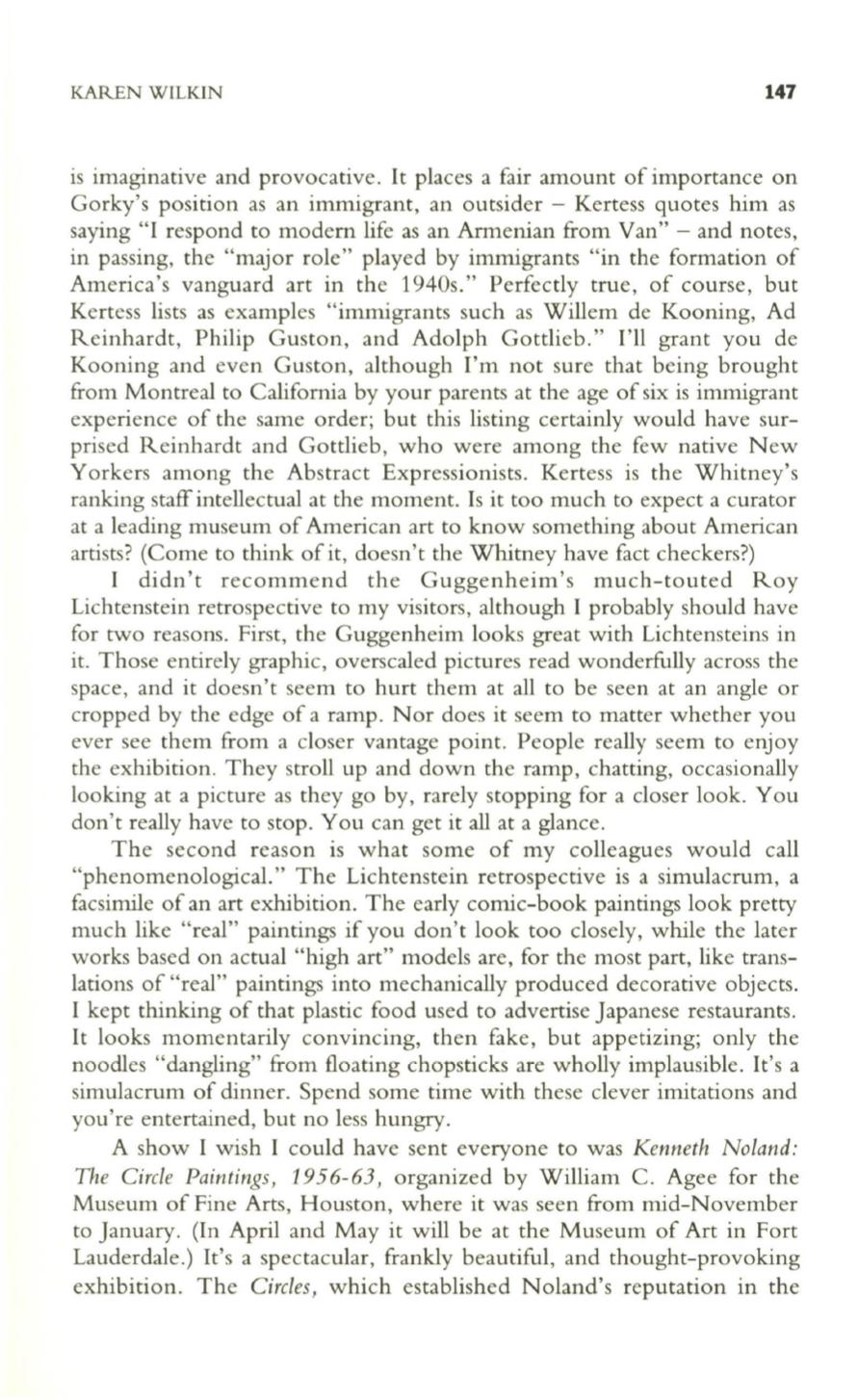
KAREN WILKIN
147
is imaginative and provocative. It places a fair amount of importance on
Gorky's position as an immigrant, an outsider - Kertess quotes him as
saying "I respond to modern life as an Armenian from Van"- and notes,
in passing, the "major role" played by immigrants "in the formation of
America's vanguard art in the 1940s." Perfectly true, of course, but
Kertess lists as examples "immigrants such as Willem de Kooning, Ad
Reinhardt, Philip Guston, and Adolph Gottlieb." I'll grant you de
Kooning and even Guston, although I'm not sure that being brought
from Montreal to California by your parents at the age of six is immigrant
experience of the same order; but this listing certainly would have sur–
prised Reinhardt and Gottlieb, who were among the few native New
Yorkers among the Abstract Expressionists. Kertess is the Whitney's
ranking staff intellectual at the moment. Is it too much to expect a curator
at a leading museum of American art to know something about American
artists? (Come to think of it, doesn't the Whitney have fact checkers?)
I didn't recommend the Guggenheim's much-touted Roy
Lichtenstein retrospective to my visitors, although I probably should have
for two reasons. First, the Guggenheim looks great with Lichtensteins in
it. Those entirely graphic, overscaled pictures read wonderfully across the
space, and it doesn't seem to hurt them at all to be seen at an angle or
cropped by the edge of a ramp. Nor does it seem to matter whether you
ever see them from a closer vantage point. People really seem to enjoy
the exhibition. They stroll up and down the ramp, chatting, occasionally
looking at a picture as they go by, rarely stopping for a closer look. You
don't really have to stop. You can get it all at a glance.
The second reason is what some of my colleagues would call
"phenomenological." The Lichtenstein retrospective is a simulacrum, a
facsimile of an art exhibition. The early comic-book paintings look pretty
much like "real" paintings if you don't look too closely, while the later
works based on actual "high art" models are, for the most part, like trans–
lations of "real" paintings into mechanically produced decorative objects.
I kept thinking of that plastic food used to advertise Japanese restaurants.
It looks momentarily convincing, then fake, but appetizing; only the
noodles "dangling" from floating chopsticks are wholly implausible. It's a
simulacrum of dinner. Spend some time with these clever imitations and
you're entertained, but no less hungry.
A show I wish I could have sent everyone to was
Kenneth Noland:
The Circle Paintings, 1956-63,
organized by William
C.
Agee for the
Museum of Fine Arts, Houston, where it was seen from mid-November
to January. (In April and May it will be at the Museum of Art in Fort
Lauderdale.) It's a spectacular, frankly beautiful, and thought-provoking
exhibition. The
Circles,
which established Noland's reputation in the


